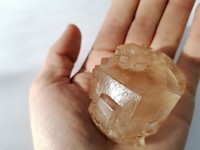Advertisement
Grab your lab coat. Let's get started
Welcome!
Welcome!
Create an account below to get 6 C&EN articles per month, receive newsletters and more - all free.
It seems this is your first time logging in online. Please enter the following information to continue.
As an ACS member you automatically get access to this site. All we need is few more details to create your reading experience.
Not you? Sign in with a different account.
Not you? Sign in with a different account.
ERROR 1
ERROR 1
ERROR 2
ERROR 2
ERROR 2
ERROR 2
ERROR 2
Password and Confirm password must match.
If you have an ACS member number, please enter it here so we can link this account to your membership. (optional)
ERROR 2
ACS values your privacy. By submitting your information, you are gaining access to C&EN and subscribing to our weekly newsletter. We use the information you provide to make your reading experience better, and we will never sell your data to third party members.
Physical Chemistry
Newscripts
Science Friction with Bob Wolke
by Science Friction with Bob Wolke
March 31, 2008
| A version of this story appeared in
Volume 86, Issue 13
March came in right on schedule this year, hard on the heels of Feb. 29, wearing its traditional leonine garb. But somewhere around the Ides of March, one has a right to expect the lion's mane to start turning into lamb's wool. Not this year. That's when the ice storm hit, and my front walkway turned into a curling rink. I had to get rid of that ice fast, lest my letter carrier perform a "slip 'n' fall" (that's lawyer lingo) and Attorney General Mukasey show up to sue me on behalf of the U.S. government.
But my winter's supply of rock salt had been all used up, so I slid out to the garage, got into my car, and skidded to the nearest hardware store. They were out of salt also. Then two more hardware stores, with the same result. I gave up and returned home, saying to myself, "Okay, Mister Chemist Person, do something clever. What else do you have that will work?"
I looked around the house. Almost anything that would dissolve in the thin film of water on the surface of the ice should do the job. Sugar? Too sticky. Vodka? I have other plans for it. And then I saw a package of Epsom Salt, magnesium sulfate. Rushing to the walkway, I sprinkled it on the ice.
It didn't work. About an hour later, it was still just sitting there on top of the ice, mocking me. Why, I wondered? Here's what I figured must be going on.
First of all, SALT DOES NOT MELT ICE. Yes, that's what I said. My dictionary defines melt as "to change from a solid to a liquid state, generally by heat." The enthalpy (or latent heat) of fusion of ice is 334 kJ/kg or 6.0 kJ/mol, so unless we supply that amount of heat, we can't melt it. And no fair using hot salt.
The conventionally invoked freezing-point depression effect does not involve heat. It depends solely on the number of particles of solute in the solution that is in equilibrium with the ice. That's why textbook authors, to prove that they know big words that their students do not, insist on calling it a colligative property. But doesn't MgSO4 put just as many ions per mole (two) into the solution as NaCl does?
Yes, but there is heat involved when most salts dissolve in water: the enthalpy or heat of solution ∆ Hsol. If the energy released by hydration of the ions (which is always exothermic) exceeds the energy used up in breaking down the crystal lattice (the lattice enthalpy), then ∆ Hsol will be negative and the solution process will be exothermic. That's why, in addition to yielding three ions per mole, anhydrous CaCl2 is a much better ice "melter" than NaCl: It hydrates like mad, releasing 81 kJ/mol, whereas NaCl is very slightly endothermic (∆ Hsol = 0.4 kJ/mol).
My Epsom Salt? I took another look at the label. It is not anhydrous; it is the heptahydrate, MgSO4•7H2O. I put some in a test tube with water, stirred it with a thermometer (the most primitive calorimeter ever devised) and watched the temperature go down. The solution process is endothermic because the ions in the solid are already hydrated. I certainly wasn't going to melt much ice by throwing a cooling agent on it.
What about the 20 million tons of rock salt that were scattered onto our U.S. roads and highways last winter? Because ∆ Hsol for NaCl is close to zero, it neither gives nor takes heat from the ice.
Then how does it work? It's a simple matter of shifting the equilibrium H2O (s) ↔ H2O (l).
As soon as some salt dissolves in the ice's surface film, the solute ions interfere with the H2O (l) molecules' (leftward) ability to join the solid lattice, and the equilibrium therefore shifts to the right: toward less solid and more solution. That is, the ice dissolves in the solution. Pardon my vernacular, but that ain't melting, and it ain't no freezing point depression phenomenon, neither. Yes, the solution's freezing point is lower than that of pure water, but so what? Our practical concern here is with ice dissolving into the solution, not the solution freezing into ice.
Advice to chemistry textbook authors: Take your "salt melts ice" baloney out of the Colligative Properties chapter and put it where it belongs: in your discussion of Equilibrium.
Bob Wolke can be reached at sciencefriction.wolke@gmail.com.






Join the conversation
Contact the reporter
Submit a Letter to the Editor for publication
Engage with us on Twitter